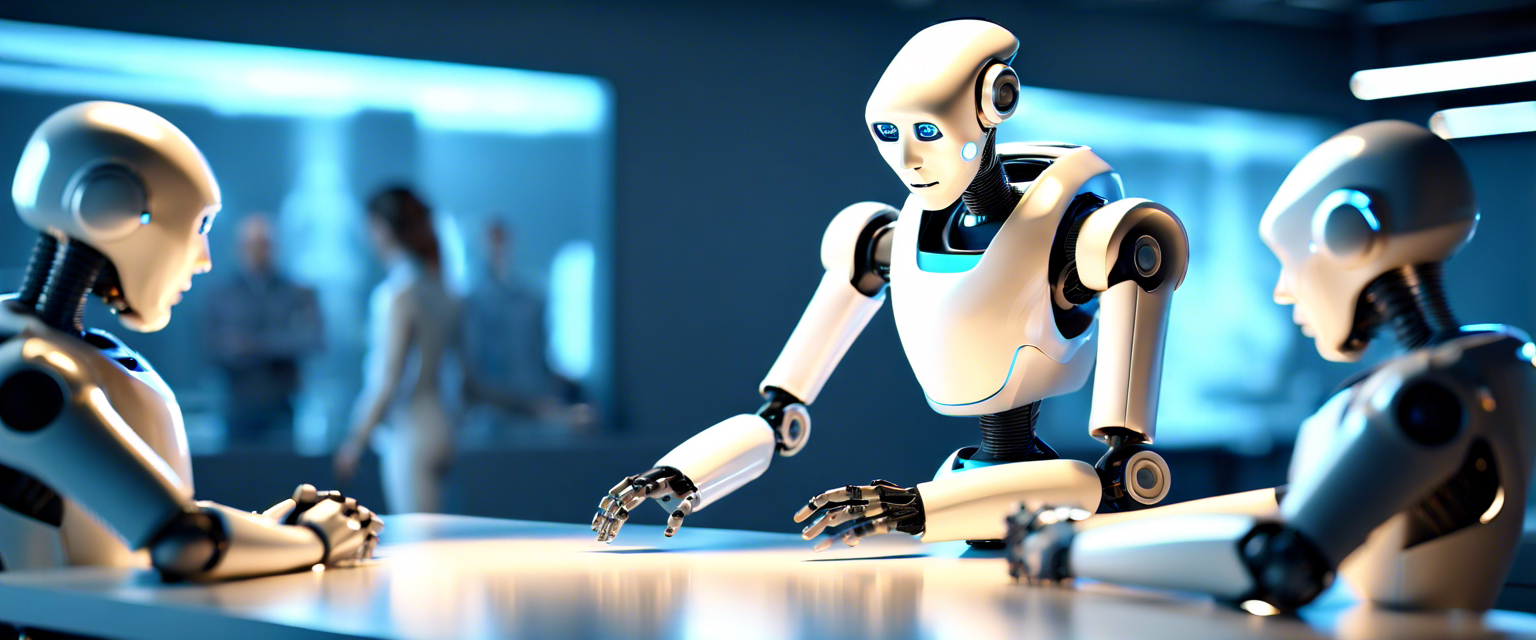The human brain has a continuous learning process and the human body functions based on the learning and thinking process of the human brain. When the human body works with unusual stuff, it starts learning and improving the way to do this.
In the case of Humanoid robots, the learning process is different and it uses Artificial Intelligence to learn new things.
There is a new study published in the joint publication of the IEEE and the Chinese Association of Automation Journal of Automatica Sinica in July titled as “Balance control of a biped robot on a rotating platform based on efficient reinforcement learning”
A team of Australian researchers has designed a reliable strategy for testing the physical abilities of humanoid robots—robots that resemble the human body shape in their build and design. Using a blend of machine learning methods and algorithms, the research team succeeded in enabling test robots to effectively react to unknown changes in the simulated environment, improving their odds of functioning in the real world.
“Humanoid robots have the ability to move around in many ways and thereby imitate human motions to complete complex tasks. In order to be able to do that, their stability is essential, especially under dynamic and unpredictable conditions,” said corresponding author Dacheng Tao, Professor and ARC Laureate Fellow in the School of Computer Science and the Faculty of Engineering at the University of Sydney.
“We have designed a method that reliably teaches humanoid robots to be able to perform these tasks,” added Tao, who is also the Inaugural Director of the UBTECH Sydney Artificial Intelligence Centre.
Humanoid robots are robots that resemble humans’ physical attributes—the head, a torso, and two arms and feet—and possess the capability to communicate with humans and other robots. Equipped with sensors and other input devices, these robots also perform limited activities according to the outside input.
They are typically pre-programmed for specific activities and rely on two kinds of learning methods: model-based and model-free. The former teaches a robot a set of models that it can use to behave in a scenario, while the latter does not. While both learning methods have been successful to a certain extent, each paradigm alone has not proven sufficient to equip a humanoid robot to behave in a real-world scenario where the environment changes constantly and often unpredictably.
To overcome this, Tao and his team introduced a new learning structure that incorporates parts of both model-based and model-free learning to balance a biped, or two-legged, robot. The proposed control method bridges the gap between the two learning paradigms, where the transition from learning the model to learning the actual procedure has been smoothly completed. Simulation results show that the proposed algorithm is able to stabilize the robot on a moving platform under unknown rotations. As such, these methods demonstrate that the robots are able to adapt to different unpredictable situations accordingly and can thus be applied to robots outside of the laboratory environment.
In the future, the researchers hope to validate their method under more complex environments with more unpredictable and changing variables and with varying dimensions as they test the robots’ abilities to exert full body control.
“Our ultimate goal will be to see how our method enables the robot to have control over its entire body as it is exposed to unmeasurable and unexpected disturbances such as a changing terrain. We would also like to see the robot’s ability to learn how to imitate human motion, such as ankle joint movement, without having been given prior information.”
The balance control training was done based on the different activity data using supervised learning and reinforcement learning.
For training The initial state of the platform is set to be parallel to the ground where it can be considered as a flat surface. The angular velocity and acceleration are both zero at the beginning. Then, sinusoidal signals are used to simulate the unpredicted external disturbances, where the angle, angular velocity, and angular acceleration were changed during the experiment. These sinusoidal signals are assumed to be unknown for the learning algorithm; thus, these can be considered as external disturbances. The sinusoidal functions are defined with the maximum amplitude of 15 degrees but the period of each function is different.
These signals are applied to the platform respectively to provide yaw moment,
where it can move along the y-axis with respect to the base frame. Due to the sinusoidal signal, the angular velocity of the platform reaches the maximum when it is parallel to the ground, and equals zero when the amplitude is 15 degrees or –15 degrees.
Analysis
The above research provides a broad perspective of, How a Robot can balance itself at the place where it never walked. The Research paper showed a complete analysis of how balancing started and moved further.
The experiment was done in a simulated environment with a robot walking on a simulated plane, inclined and declined surface and the collected data is used to train further. This data can also be used to train a physical robot on physical surface. This is a great strategy to minimize physical hurdles while doing a real experiment.
As rightly said that Data is a new food nowadays, This is a way data is created to feed them for further experiments.
The research will help real robots to learn the process of balancing them on any surface and this will have a great impact on the manufacturing of future robots.
Source: Phys.org




